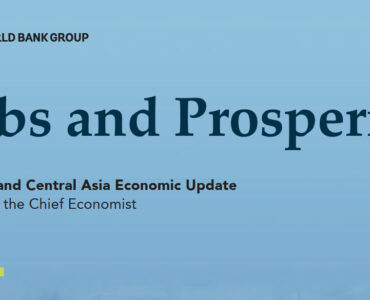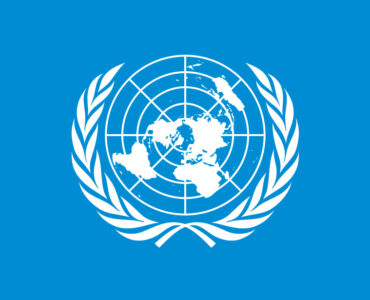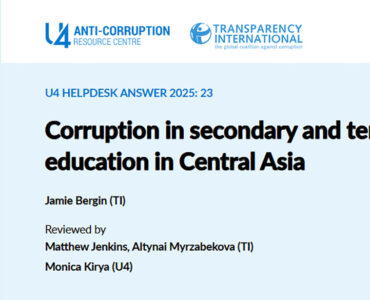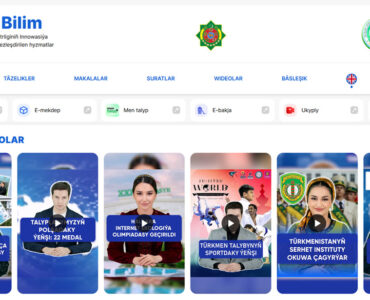The United States Department of State Bureau of International Narcotics and Law Enforcement Affairs highlights the drug control efforts worldwide, including identifying major drug producing and transit countries and detailing their progress in combating narcotics production and trafficking in its 2023 International Narcotics Control Strategy Report (INCSR), Volume I: Drug and Chemical Control.
Turkmenistan is a party to all three UN drug conventions – Convention Against Transnational Organized Crime, 1988 UN Drug Convention and Convention Against Corruption having ratified or acceded to them between 1992 and 2005. However, the report contains limited information about Turkmenistan’s involvement in the drug trade or its counternarcotics efforts. There is anecdotal data indicating that heroin smuggled from Iran, Turkmenistan, and Uzbekistan is available for personal consumption in some western areas of Kazakhstan. Meanwhile, the report includes information on other Central Asian countries which is summarized below.
Northern Route: Central Asian countries are located along the Northern Route, a key drug trafficking pathway for moving Afghan opiates and cannabis to Russia, Europe, and beyond. Afghanistan remains the world’s largest supplier of opiates, supplying 80% of global demand in 2022. The Taliban’s takeover of Afghanistan in 2021 has led to a surge in drug trafficking along this route, as evidenced by increased seizures in most Central Asian countries. For example, Uzbekistan experienced an increased drug trafficking with seizures more than doubling since 2021.
Kazakhstan’s role in this route may be diminishing, based on declining heroin seizures. To illustrate, in the first nine months of 2022, law enforcement agencies seized 33 kilograms of heroin, down from 57 kg in the same period of 2021. Similarly, the seizure of hashish dropped from 842 kg in 2021 to 670 kilograms of hashish during the same period.
Kyrgyzstan is a prime transit route for drugs moving north from Afghanistan to Russia and Europe. In the first eight months of 2022, law enforcement registered 1,109 drug crimes, a 34% increase from 2021. Seizures included 1,233 kg of hashish, 33 kg of heroin, 9 kg of opium, and 218 kg of marijuana. Moreover, in April 2022, a joint operation between Kyrgyz and Kazakh authorities dismantled two synthetic drug labs and seized 31 kg of various synthetic drugs.
Tajikistan is the primary transit country for Afghan opiates and cannabis along the Northern Route. In the first half of 2022, Tajik law enforcement seized 2.8 metric tons of illicit drugs, a 52% increase from the same period in 2021. This included a 38% increase in heroin seizures, a 33% increase in hashish seizures, and a 32% increase in opium seizures.
Donate to support Turkmen analysts, researchers and writers to produce factual, constructive and progressive content in their efforts to educate the public of Turkmenistan.
SUPPORT OUR WORKIn Uzbekistan drug seizures at the Afghan and Tajik borders have more than doubled since the Taliban assumed power in 2021. During the first six months of 2022, Uzbekistan seized over 1.3 metric tons of narcotics, a 3.7-fold increase compared to the same period in 2021. Seizures included 274 kg of heroin, 320 kg of opium, 435 kg of hashish, 199 kg of marijuana, 114 kg of poppy straw, 15 kg of synthetic drugs, and 13 kg of medications containing narcotic substances.
While heroin remains a major concern, synthetic drugs, particularly methamphetamine, are becoming increasingly problematic in Central Asia. Kazakhstan is grappling with this issue and has called for a national action plan to address it. It requires proactive measures to control precursor chemicals and disrupt production networks.
Another challenge for Central Asia is the endemic corruption, whichobstructs effective drug control efforts. Addressing this issue requires strong political will, improved accountability mechanisms, and efforts to strengthen the rule of law. The report mentions successful efforts to combat corruption in countries like Colombia and Peru, which could offer insights for Central Asian nations grappling with similar challenges.
Some of the recommendations highlighted in the report include:
- Strengthening regional cooperation: Enhanced cooperation between Central Asian countries and international partners is crucial for sharing information, conducting joint operations, and building capacity to counter drug trafficking.
- Improving border security: Investing in border security, including infrastructure, technology, and training, is essential to interdict drug shipments and disrupt trafficking networks.
- Tackling corruption: Addressing corruption through robust investigations, prosecutions, and institutional reforms is vital to enhance the effectiveness of counternarcotics efforts.
- Focusing on prevention and treatment: Expanding access to drug prevention and treatment programs is necessary to reduce demand and mitigate the social and health consequences of drug abuse.
The United States works with Central Asian countries to address the challenges posed by drug trafficking emanating from Afghanistan. This mainly includes capacity building, training programs, and funding for international organizations working in the region such as the United Nations Office on Drugs and Crime (UNODC). However, the effectiveness of these efforts is often hampered by limited resources, corruption, and the complexities of operating in a region heavily influenced by Afghanistan’s illicit drug trade.






